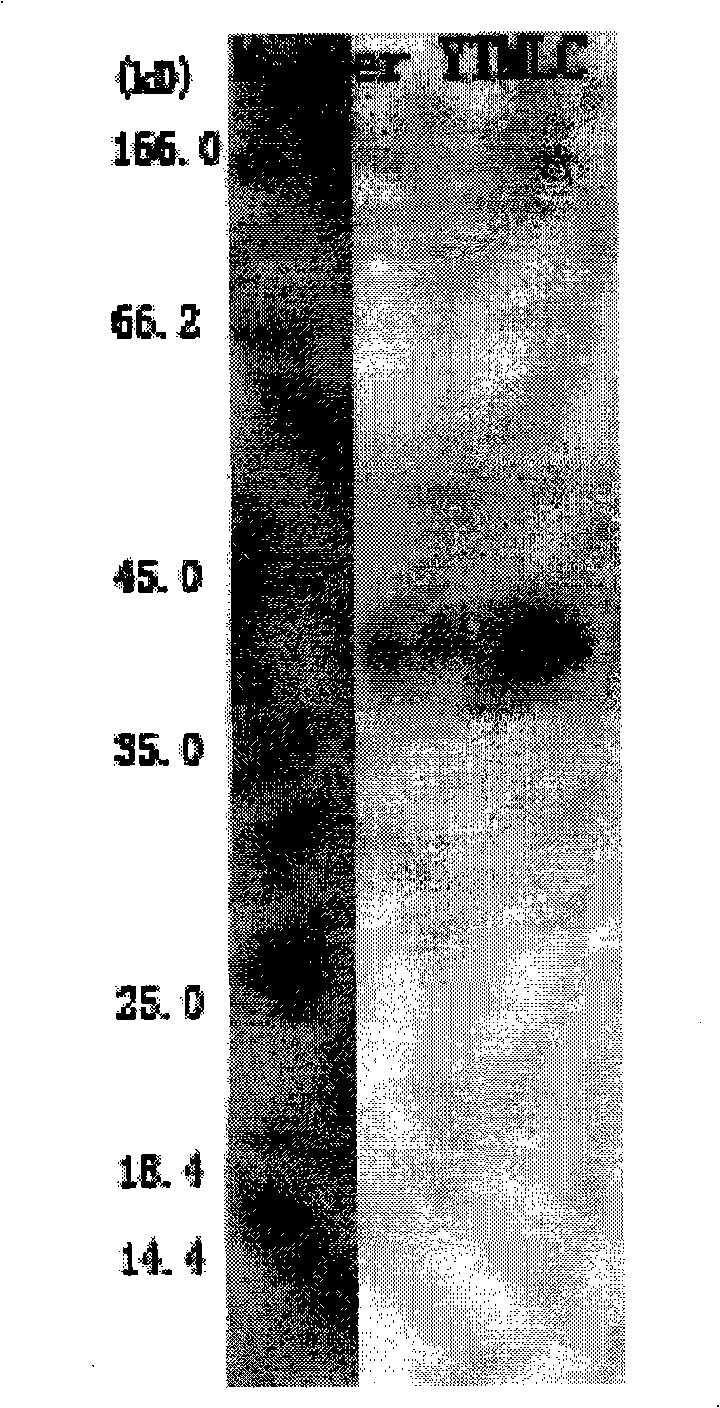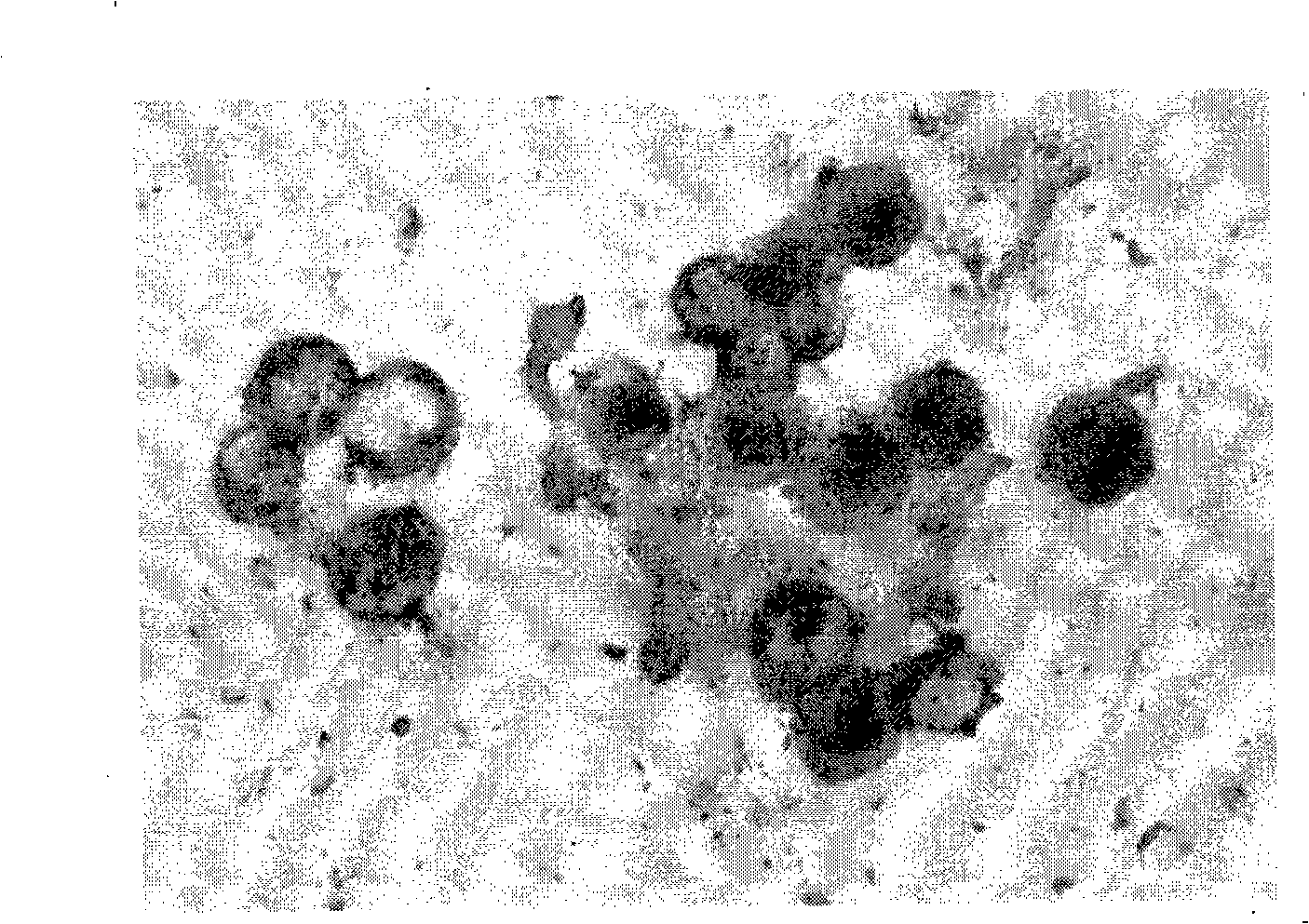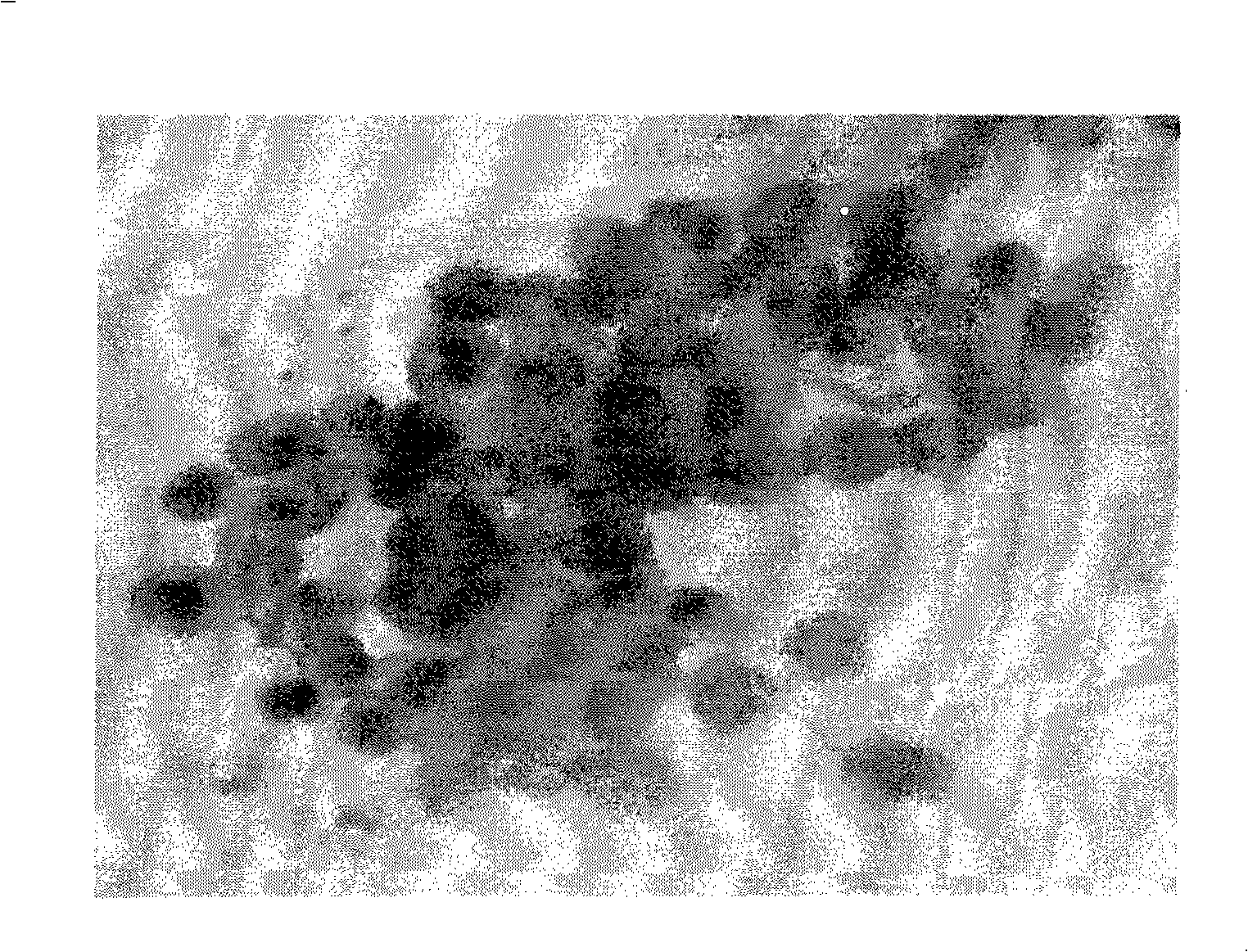Preparation of monoclone antibody of anti-HnRNPB1 antigen and uses thereof
A monoclonal antibody and antigen technology, applied in the field of immunity, to achieve the effects of safety assurance, convenient material collection, and increased sensitivity
- Summary
- Abstract
- Description
- Claims
- Application Information
AI Technical Summary
Problems solved by technology
Method used
Image
Examples
Embodiment 1
[0026] Example 1: Obtaining HnRNP B1 monoclonal antibody
[0027] 1) Procedure for immunizing mice with specific HnRNP B1 antigen
[0028] Soluble antigens have weak immunogenicity, and Freund's complete adjuvant is used in the immunization process. Mix the HnRNP B1 antigen and Freund's complete adjuvant in equal volumes, fully oscillate, mix and emulsify, and grind into a water-in-oil chylus (put a drop on the water surface and it is not easy to spread immediately, and the droplet shape indicates that the water-in-oil has been achieved. State), to fully mix the precipitated mycobacteria. The specific operation is as follows:
[0029] a. Initial immunization: HnRNP B1 antigen 1-50 μg plus Freund's complete adjuvant subcutaneously injected into mice at multiple points (generally 0.5-1ml, 0.1ml / point);
[0030] b. The second immunization: 1 week later, the dose was the same as above, and the mice were injected subcutaneously with Freund's incomplete adjuvant at multiple point...
Embodiment 2
[0084] Example 2: Purification of anti-HnRNP B1 monoclonal antibody by affinity chromatography with Protein G-Sepharose
[0085] 1) Gel preparation
[0086] a. Use Binding buffer (20mmol / L, PH 7.0PBS) to dissolve Protein G-Sepharose dry powder at a ratio of 3.5ml: 1g to form a gel and store aseptically at 4°C;
[0087] b. The gel returns to room temperature when used.
[0088] 2) Column packing
[0089] a. Use the Binding buffer to flush out the gas around the cylinder and the pores at the bottom, close the outlet when there is a little liquid in the outlet pipe, and keep 1 / 3 of the gel volume buffer in the chromatography column;
[0090] b. Pour the gel into the chromatography column along the glass rod to avoid air bubbles as much as possible;
[0091] c. Make up the remaining pores with Binding buffer, seal the inlet, connect the peristaltic pump, and start the pump (the speed should be controlled at 1-2ml / min, not too fast, less than 75cm / h);
[0092] d. Fully balance ...
Embodiment 3
[0100] Example 3: Anti-HnRNP B1 Monoclonal Antibody Titer Determination——Using ELISA Detection Method
[0101] Dilute the HnRNP B1 antigen with the coating solution (0.05mol / L, pH 9.6CB buffer) to a concentration of 10μg / ml and add it to the microplate, 100μl / well, and then incubate the microplate in a 37°C incubator for 2h , or put in a 4°C refrigerator overnight; take out the coated plate from the refrigerator, pour off the coating solution, pat dry the liquid in the wells with absorbent paper, add 1% BSA to each well, 120 μl / well, and incubate in a 37°C incubator for 2 hours Shake off the liquid in the well, wash with PBS-T 4 times, pat dry with absorbent paper, and store at 4°C; add 4× diluted anti-HnRNPB1 monoclonal antibody at different dilutions, 100 μl / well, and add PBS as a negative control ; Incubate in a 37°C incubator for 2h, then wash with PBS-T 4 times, 3min each time, and pat dry on absorbent paper; add goat anti-mouse-HRP secondary antibody (concentration recom...
PUM
 Login to view more
Login to view more Abstract
Description
Claims
Application Information
 Login to view more
Login to view more - R&D Engineer
- R&D Manager
- IP Professional
- Industry Leading Data Capabilities
- Powerful AI technology
- Patent DNA Extraction
Browse by: Latest US Patents, China's latest patents, Technical Efficacy Thesaurus, Application Domain, Technology Topic.
© 2024 PatSnap. All rights reserved.Legal|Privacy policy|Modern Slavery Act Transparency Statement|Sitemap



